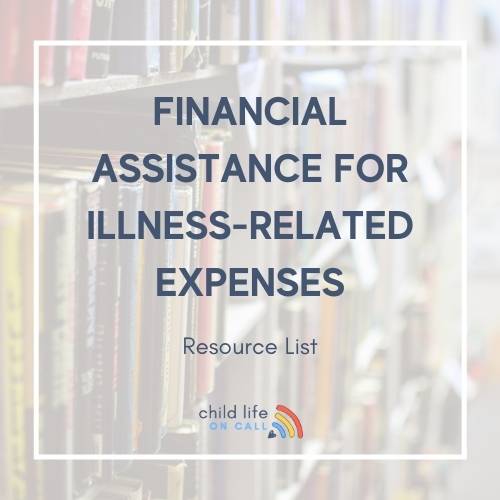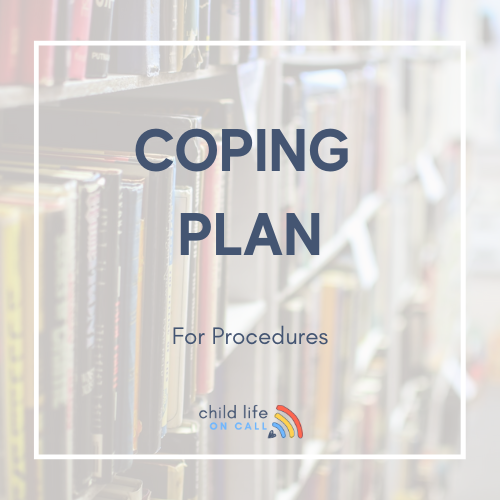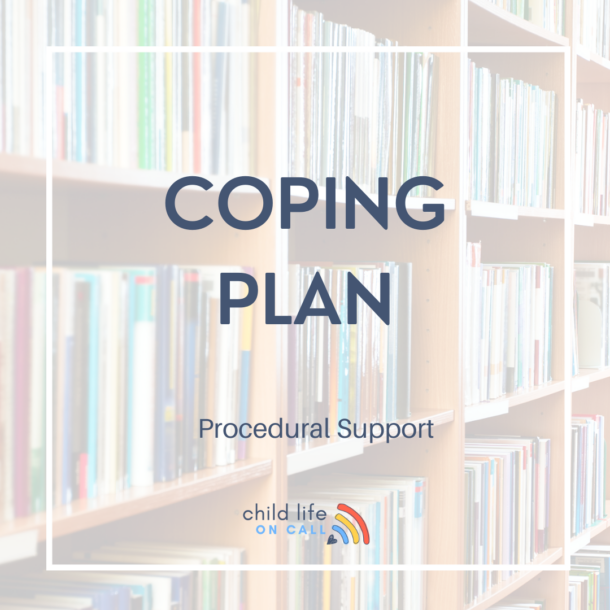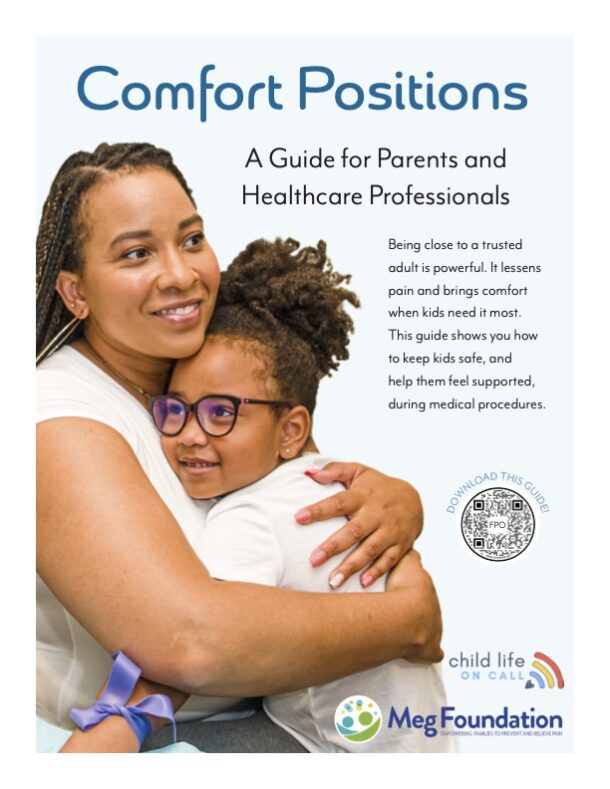Consider the child in a hospital, anxious about an upcoming procedure. Now, imagine a scenario where that same child feels prepared and at ease, thanks to an approach tailored to their age and developmental stage. This is the potential impact of individualized medical preparation – it’s transformative, not only for the child but also for their family and the healthcare professionals involved. For ChildLife specialists and healthcare providers, understanding and implementing these strategies can result in children who feel heard, seen, and respected during their medical experiences.
Here are the key steps:
- Empowering Parents to Support Infants in Medical Settings
- Utilizing Play for Medical Preparation in Toddlers
- Harnessing Imagination for Preschoolers’ Medical Understanding
- Building Confidence in School-Age Children During Medical Procedures
- Respecting Privacy and Independence in Teenagers’ Healthcare
1. Empowering Parents to Support Kids in Medical Settings
We live in a multifaceted world and this diversity extends into every corner of our lives, including the healthcare setting. When it comes to preparing children for medical procedures, a one-size-fits-all approach simply won’t cut it. It is fundamental to tailor the approach to suit every child’s age, development stage, and individual needs. This understanding is the first step toward providing the most effective emotional support to infants during medical procedures. Viewing it from a personal lens, I remember when I worked in radiology and we had about a 500 square foot waiting room filled with chairs, building blocks and lots of books.
My patient did not want to leave the waiting room. He was having a blast using books and blocks to build a huge fort. This makes complete sense, right? Why would he leave a perfectly good “play room” to go get an X-ray with a bunch of people he’d never met?
Using play as the ultimate connecter, I spent time in the waiting room with him with no agenda but to just play. After a few minutes, he got curious about my job and when I told him I was in charge of all the toys in my area – he completely perked up. I told him that it was possible to even play – DURING X-RAYS. His mouth opened so wide for a smile that I knew he’d be excited to know he could bring some of the books and blocks back to the X-ray room. This made the transition so much smoother for him and his family. Children process their world primarily through play and imagination. By tapping into these categories while preparing them for medical procedures, we can help them better understand what’s happening and mitigate associated stress.
Finally, we cannot underestimate the significance of this tailored approach for the betterment of our healthcare system. It can be a game-changer in pediatric care. Customizing the preparation process to align with a child’s developmental stage can empower the child, reducing fear and anxiety associated with medical procedures. This, in turn, can improve cooperation, leading to smoother procedures, less traumatic experiences, and overall improved health outcomes. By elevating the level of care we give, we can create a more positive and productive healthcare environment for our younger patients.
2. Utilizing Play for Medical Preparation in Toddlers
It’s a truth universally known in the medical world that children and adults perceive and respond to experiences differently. This difference is primarily due to the varied stages of cognitive development that determine how children understand and interpret situations, especially those involving their health. As such, the idea of medical procedures or hospital visits can induce varying degrees of anxiety and fear in children. The key to mitigating these fears and making these encounters less stressful is careful, age-tailored preparation.
In particular, when dealing with toddlers, the use of play has proven incredibly beneficial. Toddlers naturally learn and make sense of their world through play. Therefore, incorporating play into the process of preparing toddlers for medical procedures can ease their fear, build familiarity with new situations, and empower them with a sense of control. Reflecting on the podcast conversation, the play-based approach resonates profoundly with how toddlers naturally learn and interact with their environment.
Let’s take a moment and look at a specific example in the healthcare setting; imagine a toddler poised to undergo a procedure involving an anesthesia mask. By incorporating play with the actual mask, be it on their favorite doll first or even themselves, the child becomes familiar with the item. They understand its function, at a level appropriate to them, through playful engagement. This practical familiarity reduces the mask’s threatening perception, makes it less scary, and fosters better coping during the actual procedure.
It’s about creating an environment where medical procedures shift from potentially terrifying experiences to ones that a child feels better equipped to handle. Undoubtedly, the understanding of using play for medical preparation for toddlers is crucial to healthcare providers and child life specialists for several reasons. Children’s experience in healthcare setting significantly impacts their perception of and approach to subsequent medical encounters.
A negative experience can induce a lifelong fear of medical settings, making future visits or procedures more stressful and difficult not just for the child, but their family and healthcare providers as well. In contrast, positive experiences build confidence and a better coping mechanism for the child. It all comes down to delivering high-quality, compassionate care to these young patients. By integrating strategies like play into medical preparation, healthcare providers open avenues to ensure that every child they care for has a less stressful, more positive experience in their healing journey.
3. Harnessing Imagination for Preschoolers’ Medical Understanding
The key takeaway from our discussion today highlights the important role that imagination plays in helping preschoolers better understand and process medical procedures. At this age, children’s brains are wired in a powerful and unique way; they rely heavily on magical thinking. Everything from the tooth fairy to monsters under the bed feels very real and significant to them. This type of cognition, although sometimes mystifying, can actually be harnessed as a powerful tool when it comes to preparing children for medical procedures. By tapping into their rich world of make-believe, we can create metaphors and analogies that align with their interests and understanding of the world. This approach makes abstract or frightening medical procedures feel more relatable and less intimidating to young kids.
To expand a little more on specific examples, let’s consider a child who is about to undergo chemotherapy. For most people, the word is loaded with weighty connotations, but for a preschooler, it is probably just a string of unfamiliar sounds. Instead of explaining this intensive procedure in clinical terms, we can make it more relatable by comparing it to superheroes fighting against bad guys. It’s all about delivering information to children in a way they can easily digest and relate to.
For toddlers, acting out medical procedures on a doll was an effective technique. Similarly, using metaphors for preschoolers is also a practical and child-friendly strategy to help them navigate medical procedures. The main reason this key takeaway is so crucial is that it focuses on a strategy that is attuned to the child’s cognitive development. Kids at this age are more likely to understand and accept information that is presented in a manner that aligns with their cognition.
Magical thinking is a natural part of their psychological development. Using metaphors and analogies not only reduces the fear and anxiety associated with medical procedures but also plays a significant role in promoting their overall psychological well-being. Moreover, it assists kids in becoming more proactive and engaged in their healthcare processes, which can have lasting positive impacts on their medical experiences. Therefore, embracing children’s imagination is not just a whimsical idea; it is a profound strategy with tangible results.
4. Building Confidence in School-Age Children During Medical Procedures
When it comes to dealing with medical procedures, one of the most effective strategies to put the child and their parents at ease is by building the child’s confidence. For school-age children, this ability to generate self-assurance becomes even more crucial because they typically have a better grasp of the sequence of events and can recall previous experiences. Confidence is best nurtured through understanding. When the medical procedures are simplified and adapted to their comprehension, it lessens their fear of the unknown. Instead of viewing these procedures as abstract or even threatening scenarios, children are prompted to see these situations as manageable, thus reinforcing their self-confidence.
This approach allows them to see that they already possess the skills to cope, making them feel more at ease and prepared. From my own perspective, the conversation hinted at an overlooked factor in medical settings: determining the child’s readiness to understand and participate in discussions about their medical procedures.
Not all school-going children may be mentally prepared for such mature conversations, hence the need to respect those boundaries. Encouraging them while giving them room to adjust according to their comfort level will prevent the children from recoiling from the process due to information overload or a sudden spike in anxiety. Instead, it will make sure they gradually adapt to their circumstance, and as a result, their self-assurance will improve, equipping them to face the situation more confidently. This key takeaway is indispensable for those working in pediatric healthcare since it underpins a crucial aspect of providing healthcare to children: understanding their unique needs.
Building confidence is not just about quelling fears, but values the mental well-being of a child by acknowledging and respecting their limit in processing certain events. Incorporating such an approach makes the healthcare procedure a joint venture between the child and the healthcare provider, helping to build a supportive relation. This receptive approach can significantly alter their perception and response to healthcare settings, driving a positive healthcare experience for both the child and their family, propelling an improved quality of care.
5. Respecting Privacy and Independence in Teenagers’ Healthcare
One of the key takeaways of this conversation is respecting privacy and independence in teenagers’ healthcare. Understanding this particular age group’s needs is crucial. Teenagers value their independence, especially when experiencing stressful situations such as medical procedures. Recognizing this and creating an environment in which teens have control can significantly affect their medical experience and influence their willingness to engage. I remember, there was an instance where we had a teenage patient, who was particularly apprehensive about an upcoming procedure (urinary catheterization).
Allowing her to choose who would be in the room with her during the process, what kind of music she would like to listen to, or even when she would like to schedule the procedure, provided her a sense of control. It is her health and her body, and respecting her privacy and independence was crucial in making her feel comfortable and less anxious. Incorporating these elements can make a significant difference. Healthcare providers must establish trust with their teenage patients. This can be achieved by being transparent about the process, allowing them control where possible, and protecting their privacy.
When teenagers feel understood and respected, it fosters a sense of trust and paves the way for more seamless communication and interaction. Ensuring teenagers are involved in their healthcare decisions can make them feel more in control, reducing anxiety and stress. This forms an important step in creating a healthier relationship between healthcare providers and teenage patients.
To healthcare providers and specialists working with children, taking into account the different developmental stages when preparing children for medical procedures is integral to providing quality care. This not only alleviates stress and anxiety but directly contributes to improved medical outcomes.
By empowering parents, engaging children through play, harnessing imagination, building confidence, and respecting privacy, we can affect significant change in the healthcare experience for children of all ages. So, let’s step forward with this knowledge, driven by the aim of transforming pediatric healthcare, one interaction at a time.
Have you tried these tactics and strategies? Share your successes and challenges with us in the comments.













